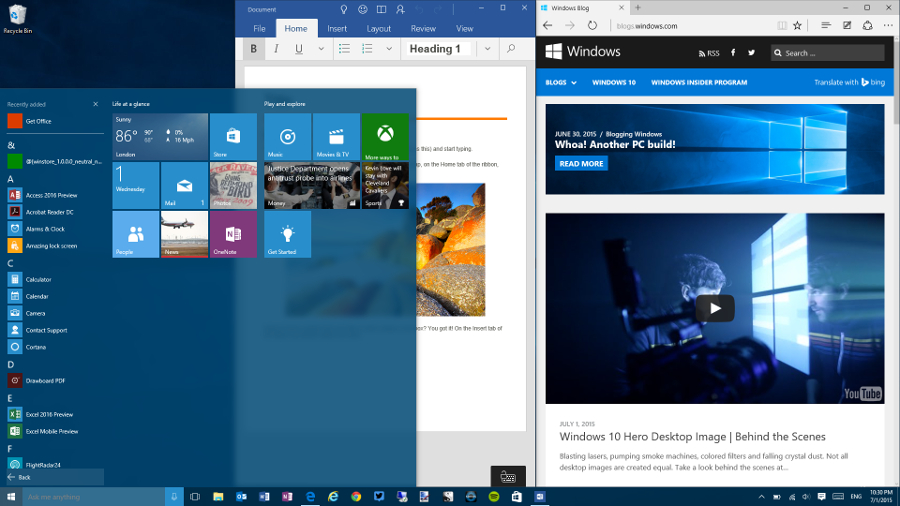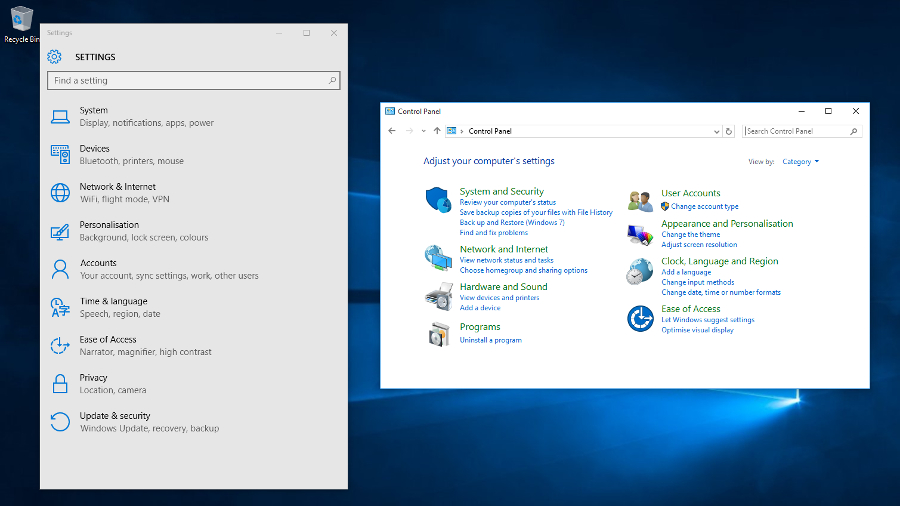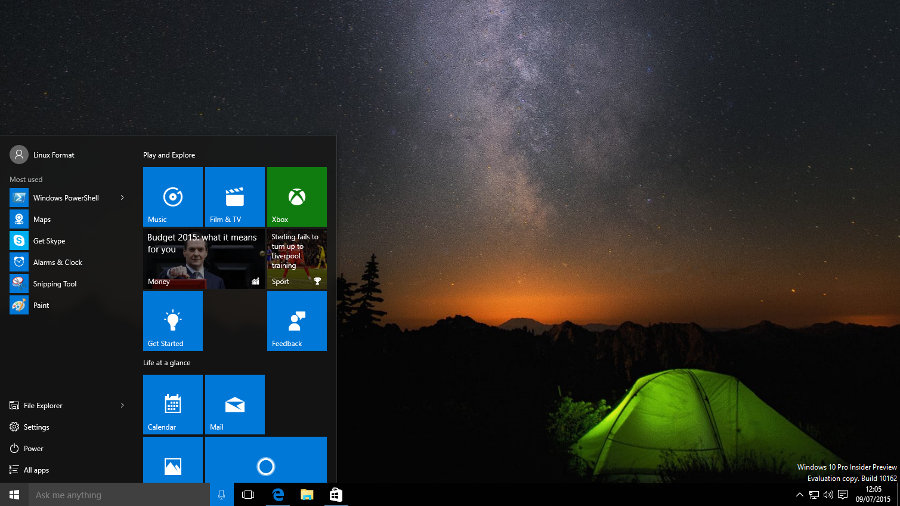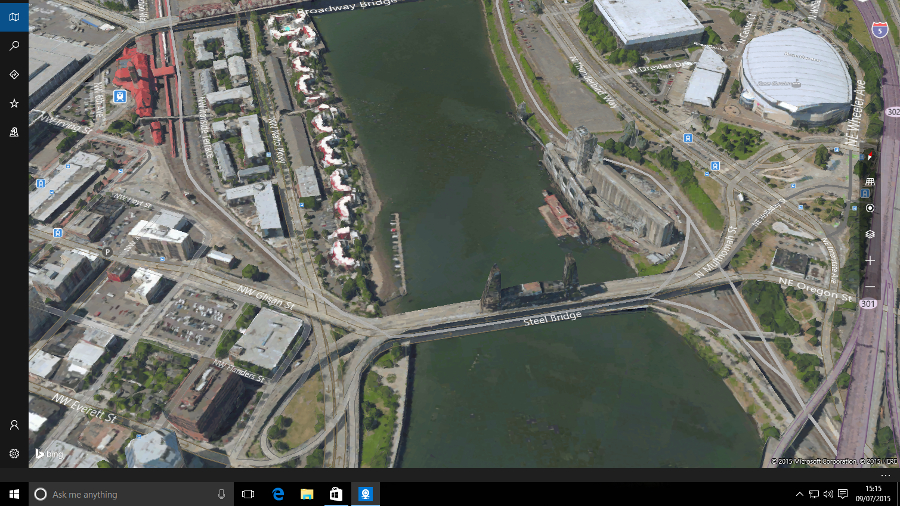OS showdown: Windows 10 vs Linux

This article was provided to TechRadar by Linux Format magazine. Each issue is packed with news analysis, in-depth features on vital Linux topics, helpful tutorials from our expert writers, and more. Subscribe to the print or digital version of Linux Format here.
So the latest iteration of Windows has now been unleashed, and as has become tradition at Linux Format, we pit the Redmond-ian OS mano-a-mano with Linux to determine the ultimate operating system.
Of course, in reality this is comparing apples and oranges: One is a free codebase which can run on most any hardware imaginable, the other is a proprietary product with an undecouple-able GUI that, until recently, has run only on x86 PCs. Our approach will be to consider features from Windows 10 and compare them with like-for-like equivalents from various Linux distributions.
- Also check out: 20 smart new and improved features in Windows 10
Microsoft's new operating system has certainly brought forth a lot of changes, and perhaps the most notable is that Windows 10 will be the last incarnation of the OS. That doesn't mean the end of Windows, but rather the beginning of "Windows as a Service". Updates will be pushed to consumers once Microsoft deems them ready, while businesses will be offered a choice of two release channels, dubbed Current and Long Term which offer more rigid release cycles. Individuals who purchase (or are entitled to a free) copy of Windows will see it supported "for the lifetime of that device".

Windows gone by
One can forgive Microsoft for abandoning its previous strategy of doing discrete releases, it hasn't on the whole worked out well. Windows Vista was received with generally little affection, mostly because of its demanding system requirements, but let's not forget good old user-inertia.
This is going to get us in trouble but Vista did have some good points. Sure, the constant user account control interruptions were annoying, but they were part of a well-intentioned move to introduce proper account privileges to Windows. DirectX 10 introduced new and exciting multimedia features and the new WDDM driver model promised improved graphics performance. But for the most part, the release was widely seen as a failure, ignored by users and businesses alike. At its peak it could only manage a paltry market share of about 21%.
In sum, having a single release of Windows obviates fragmentation problems for Microsoft and upgrade woes for customers. Assuming, of course, that they upgrade in the first place. Many an upgrade-refusenik cites Windows 8 as a reason for staying put and it will be hard to assuage their trepidations and get them to move on. Cosmetically Windows 10 doesn't look or feel all that different to Windows 8.1.
Sign up for breaking news, reviews, opinion, top tech deals, and more.
This might just be because we here at LXF towers prefer to work with grown-up operating systems, but if Microsoft really wanted to avoid naming its latest progeny Windows 9, then 8.2 would be a much better title. Obviously it's a secret how different the underlying codebase really is, but digging around the settings you'll find the same Device Manager that has been kicking about since XP. You'll even find win.ini and system.ini files which date back to Windows 3.1.
The Microsoft of today is a different beast to that of yesterday. The company still enjoys desktop dominance (albeit split between its last five desktop OSes), but this is no longer enough, and Nadella is only too aware of it. The real battle is taking place on mobile devices, and Microsoft barely has a foot in the door.

One of the most touted Windows 10 features is platform convergence: PCs, Xboxes, Windows Mobile devices, giant Surface Hubs and even the Win10 build for Raspberry Pi will all run on a unified Windows core, so that one app will run consistently on any of these platforms. For convertible tablet/laptop devices, there is also the Continuum feature, which ensures apps will undergo a seamless UI transition whenever the device is transformed.
When Windows 10 Mobile is released, it will enable users to plug their phones into a monitor, mouse and keyboard and use the handset as they would a regular PC. In July last year Satya Nadella stated there was already 90% API overlap between mobile, desktop and Xbox code.
Convergence has also been one of Canonical's buzzwords ever since the introduction of the controversial Unity desktop. Two Ubuntu phones have already been released, but these rely on Unity 8 which incorporates the new Mir display server. These technologies have a long way to go before they are stable for desktop use, although brave souls willing to try can do so through the Ubuntu "Next" channel. In all likelihood Microsoft will achieve convergence before Canonical does, but the real challenge for both parties (both small fish in the mobile ecosystem) will be leveraging this feature to win over consumers.

Market share
Windows 7, released three years after Vista, did a reasonable job of righting some of its perceived wrongs and, credit where credit is due, was generally a much better OS than its predecessor. Adoption was fairly cautious, but by Q3 2011 it had surpassed XP. Unfortunately for Microsoft, many of those XP diehards refused to budge and to this day continue not to do so.
In a way, Microsoft's most successful operating system has become its greatest bugbear. Even today, fourteen years since being released and over a year after it reached its prolonged End Of Life (EOL) the blue and green dinosaur that is XP is still very much alive (but probably not well). No doubt Microsoft enjoys the remunerations that go with expensive post-EOL arrangements, but these resources could surely be better directed elsewhere.
Which brings us to 2012, Windows 8, and the interface formerly known as Metro. While a boon for touchscreen users, desktop users were lost and confused searching for familiars, namely the Start Menu and the desktop. These were hidden behind unintuitive shortcuts or touch gestures. The OS was accused of being in the midst of an identity crisis, with Desktop apps and Metro apps rendered entirely at odds with each other.
Windows 8.1 was released about a year later and, heeding users protestations, backpedalled on many of the design decisions. Reception was much warmer, but traditional keyboard and mouse navigation remained awkward. At the time of writing, there are about as many people still using Windows XP as are using 8.1, with both enjoying around a 13% share of the desktop market.
- Read more about Windows 10 migration on our sister website, ITProPortal.com